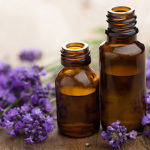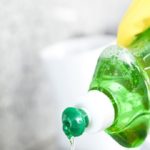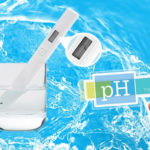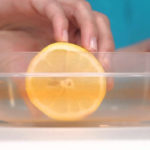Dishwashing is a seemingly easy task but not as straightforward as you might think because if you wash dishes incorrectly, it can be harmful to your health. Therefore, before or after eating, it is important to wash dishes and utensils thoroughly. Here are some mistakes to avoid when washing dishes:
Soaking dishes in water or soap for a long time
After finishing a meal, many people do not want to wash dishes right away but soak them in water. This is an action that nurtures bacteria. The period for bacteria to invade the dishes is 1 – 4 hours after eating. Within 8 – 18 hours, bacteria multiply rapidly.
If after every 20 minutes, 1 bacterium divides into 8, then after 10 hours, there will be more than 1 billion bacteria. So you should try to wash dishes within 4 hours after eating.
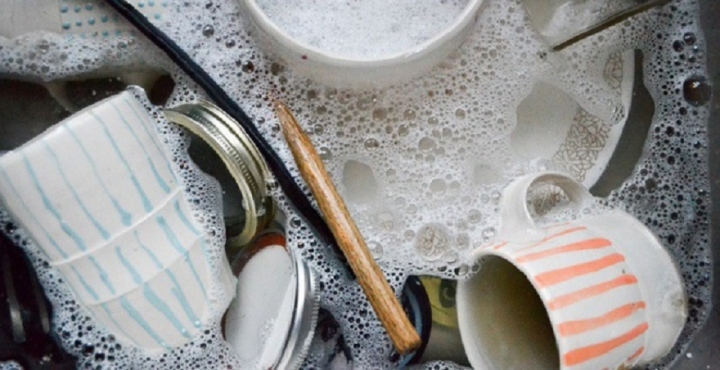
Soaking dishes in water or soap for a long time is a mistake to avoid when washing dishes.
Pouring water directly onto dishes
Many people believe that pouring dishwashing liquid directly onto dishes will help remove oil and grease more effectively. However, in reality, this not only wastes a lot of water but also harms your health. Dishwashing liquid is likely to remain on the dishes, and when it enters the body, it can cause digestive problems such as diarrhea, stomach pain, and even affect internal organs and endocrine system.
The correct way is to pour a suitable amount of dishwashing liquid into the water, dilute it, and then soak it with a dishwashing sponge. After cleaning, it is best to leave the dishes in a dry place.
Putting dirty dishes in the sink without any order
Many people have the habit of putting all the dirty dishes in the sink without arranging them in any order, which results in oil and grease from dirty dishes spreading to cleaner ones, making it more difficult and increasing the risk of cross-contamination.
Therefore, it is advisable to separate dishes with fewer oil and grease residues from those with more, and clean them separately using a dishcloth or rinsing them with hot water before putting them in the sink. In the sink, you should arrange large dishes first, and then small ones.
Turning dishcloths into “multi-purpose cloths”
Some people, in order to save time or out of convenience, use the same cloth to wash dishes and wipe countertops. This habit is very harmful because bacteria will spread from one place to another, and the most dangerous is the bacteria sticking to the dishes, which can be harmful to health.
Use a separate cloth for washing dishes and other types of cleaning cloths. They should all be washed clean after use and replaced once a month.
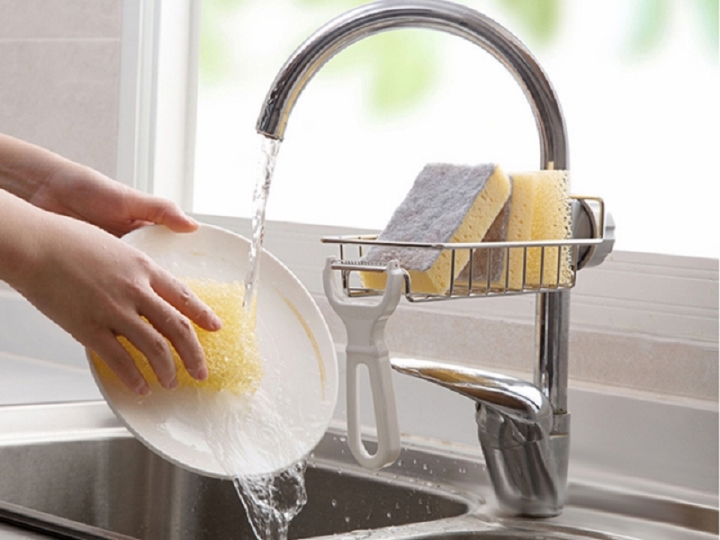
Do not use a dishwashing cloth to wash other objects.
Inadequate rinsing
Many households rinse dishes under running water until there are no soap bubbles or any greasy feeling, and consider it clean. However, not many people know that the chemicals will still adhere to the surface of the dishes if rinsed hastily and wiped lightly with hands under running water. To thoroughly clean the dishes, you need to rinse them at least twice: the first time using a dishwashing sponge, and the second time with your hands.
Not drying dishes before storing
Many people immediately store the dishes after washing to avoid dust, but a closed and humid environment will cause bacteria to multiply. Stacking wet dishes on top of each other can also cause an unpleasant smell and make them less clean. If you do not have a dish dryer, after washing, dry them thoroughly with a clean cloth before storing them. You can also place the washed dishes in a well-ventilated and dry place to ensure they are clean and dry for the next use.
How to wash dishes effectively and safely
Use hot water
Rinse the dishes with hot water after cleaning them. This method not only cleans the dishes but also helps them dry quickly without being damp.
Utensils made of bamboo or wood, such as chopsticks, spoons, cutting boards… are prone to dampness and mold. To clean these utensils, soak them in hot water to sterilize. Do this about two or three times, and the mold will be gone.
When the pan is burned, it is very difficult to clean it normally. At this time, you need to immediately soak it in hot water, let it cool for a while, and then gently scrub it with a dishwashing scrub. While scrubbing, pour a little warm water to soften the burnt food stuck at the bottom of the pan. After cleaning thoroughly, rinse again with dishwashing liquid.
For plastic containers that often have an unpleasant odor even after using dishwashing liquid, soak them in hot saltwater before re-washing them with dishwashing liquid. This little trick will not only remove grease but also eliminate any lingering food smells on plastic items.
Use lemon or vinegar
The gaps and crevices on a cutting board are very difficult to clean and they will be a perfect hiding place for bacteria. Rub a lemon on the surface of the cutting board for about 5-10 minutes. The acid from the lemon will seep into the wooden board, remove dirt, and kill bacteria.
Stainless steel, copper, and tin pots and pans will be polished and become shiny with just half a lemon. Lemons have high acidity and are easy to remove black deposits underneath the pots and pans. In addition, before scrubbing the pots and pans, soak the lemon in saltwater. They will eliminate unseen dirt at the bottom of the pots and make the surface shine.
Housewives can make their own dishwashing liquid by using half a lemon and a little baking soda. The homemade dishwashing liquid solution will remove grease, make the dishes shine, and be gentle on the skin.
According to VTC.vn

























